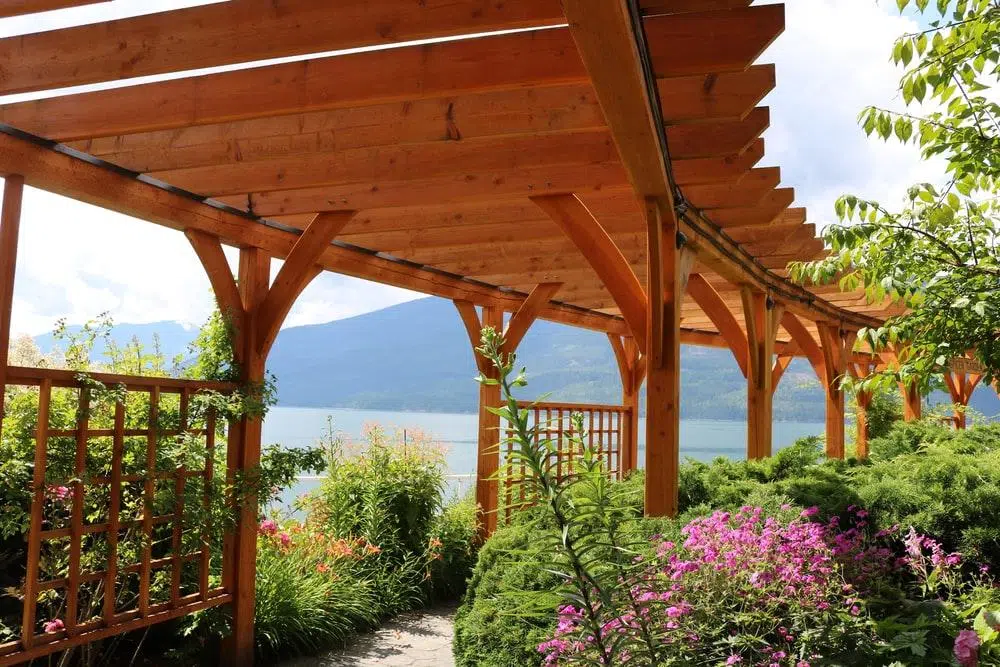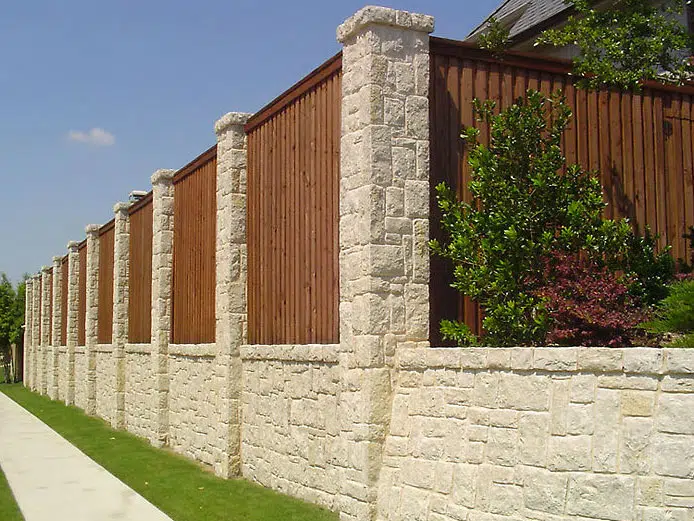The Difference between Pergola and Arbor

The words arbor and pergola are used interchangeably to refer to two different outdoor structures. Both are constructed with posts that hold up an open roof of lattice or beams. Moreover, both structures generally support climbing plants or vines.
Pergola is derived from the Italian word pergola, meaning projection. It describes the wooden structures in Roman gardens that projected from the exterior walls and were supported on a single side by pillars or columns. Architects from the Italian Renaissance period constructed pergolas to mimic the Imperial Roman villas.
Arbors go back to the Roman and Egyptian gardens and were used all over Europe by the latter half of the 16th century. The word arbour or arbor is an English word thought to have come from the Anglo-French herbe or Old French herbere, meaning grass or herb.
In this article, we will take a detailed look at the differences between pergola and arbor.
The Difference between Pergola and Arbor
If you’re thinking about the differences between an arbor and a pergola, you aren’t alone. These terms are typically used interchangeably, even though they are two different structures. While a pergola and arbor both have supportive posts with what’s usually an open roof made up of beams or lattices, there is more that differentiates the two.
Uses
One simple way to differentiate between a pergola and an arbor is to look at their purpose and placement. For instance, an arbor is generally placed on paths, entrances, or walkways and is used for more decorative purposes. They’re usually smaller compared to pergolas and don’t offer much shade. Rather, they only add beauty and decoration to a garden entrance or pathway. They might even be used to offer shelter or create a sitting area for a couple of people.
On the other hand, a pergola is considerably larger and offers a sheltered and shady area for several individuals to gather. You can use the space for BBQ parties, gathering with your guests, and unwinding in the evening. You can connect the pergolas to the side of your house or place them over patios and decks.
Appearance
Arbors and pergolas have major differences when it comes to appearance. For instance, arbors are generally made with four or two posts with an arched and slatted roof. In contrast, pergolas usually have four posts or more along with flat roofs. The arbor’s side is typically covered with a trellis or lattice, whereas the pergola’s side is usually left open.
Regarding construction, a pergola can be constructed from numerous materials such as fiberglass, cedar, pine, Alumawood, etc. On the other hand, arbors can be constructed from composite, metal, vinyl, or wood.
Plants
Both pergolas and arbors can support climbing plants or vines. As a matter of fact, pergolas were initially made in historic times around Rome, Egypt, and Greece solely to offer support to vines and climbing plants and add decoration and beauty to outdoor spaces and gardens.
Thus, you can get both a pergola or arbor to grow vines or plants across the roof or along the lattice or trellis side walls. However, think properly regarding the plants you choose as the structure should be able to support their weight and size.
Both pergolas and arbors are perfect for a variety of plants such as roses, clematis, jasmine, and American honeysuckle. Nevertheless, some plants, such as grapevines or wisteria, can be fairly heavy, and you should only place them on sturdy and strong pergolas.
Cost
A pergola is typically costlier than an arbor. However, the actual cost depends on whether you purchase a prefabricated kit and set it yourself or recruit a professional to construct and set up the whole thing right from scratch.
Pergola kits cost anywhere between $1,500 to $2,500. If you choose to install it, you won’t have to incur any extra costs. If you work with a professional, your cost will be approximately $500 to $1,000. To design, build, and set up a customized design, you will have to pay around $10,000 or higher, particularly if you opt for costlier materials such as fiberglass.
Conversely, you can get wooden and plastic arbor kits for around $150 to $250 and set them up yourself. If you want an expert to construct and set up an arbor from scratch, you will have to pay $1,000 or higher, depending on the design, size, and materials.
Other Features
Besides plants, you can even decorate pergolas and arbors with lights and other decorative items. You can string solar-powered or battery fairy lights around the roof or lattice of an arbor to add to its beauty. Pergolas are typically strong and large enough to support bigger lights with hanging lanterns or bulbs.
Pergolas can even have curtains added to the sides to offer privacy and decoration. As pergolas are sturdier and stronger, you can attach swings to the roof beams or install a shade along the roof. Certain pergolas have also been fitted with hanging beds and hammocks.
The Similarity between Pergola and Arbor
The similarities between an arbor and a pergola are what throw people off. Both of them are found in outdoor spaces such as parks, gardens, and patios. They are usually made of wood and feature a crossbeam design for the roof. They can both have sides made of lattice or be entirely open with no sides.
You can decorate both the structures with vines or plants or have little to no decoration at all. Once you know what they’re used for, it will be easier to differentiate them.
Last Few Words
Once you’re aware of the differences between a pergola and an arbor, it’s easy to distinguish between the two. Each serves various purposes despite sharing common design elements. Even though size is important for an arbor, appearance isn’t as important as purpose and function. If you wish to get an outdoor structure, head on over to Texas State Fence.


